Audi Q6 e-tron vs BMW iX3 - Differences and prices compared
Costs and Efficiency:
When it comes to price and running costs, the biggest differences usually appear. This is often where you see which car fits your budget better in the long run.
Audi Q6 e-tron has a barely noticeable advantage in terms of price – it starts at 54400 £, while the BMW iX3 costs 59100 £. That’s a price difference of around 4629 £.
In terms of energy consumption, the advantage goes to the BMW iX3: with 15.10 kWh per 100 km, it’s barely noticeable more efficient than the Audi Q6 e-tron with 15.60 kWh. That’s a difference of about 0.50 kWh.
As for range, the BMW iX3 performs somewhat better – achieving up to 805 km, about 149 km more than the Audi Q6 e-tron.
Engine and Performance:
Power, torque and acceleration are the classic benchmarks for car enthusiasts – and here, some clear differences start to show.
When it comes to engine power, the Audi Q6 e-tron has a minimal edge – offering 490 HP compared to 469 HP. That’s roughly 21 HP more horsepower.
In acceleration from 0 to 100 km/h, the Audi Q6 e-tron is slightly quicker – completing the sprint in 4.40 s, while the BMW iX3 takes 4.90 s. That’s about 0.50 s faster.
In terms of top speed, the Audi Q6 e-tron performs hardly perceptible better – reaching 230 km/h, while the BMW iX3 tops out at 210 km/h. The difference is around 20 km/h.
There’s also a difference in torque: Audi Q6 e-tron pulls noticeable stronger with 855 Nm compared to 645 Nm. That’s about 210 Nm difference.
Space and Everyday Use:
Beyond pure performance, interior space and usability matter most in daily life. This is where you see which car is more practical and versatile.
Seats: offers more seating capacity – vs .
In curb weight, Audi Q6 e-tron is hardly perceptible lighter – 2200 kg compared to 2360 kg. The difference is around 160 kg.
In terms of boot space, the Audi Q6 e-tron offers slight more room – 526 L compared to 520 L. That’s a difference of about 6 L.
In maximum load capacity, the BMW iX3 performs slightly better – up to 1750 L, which is about 221 L more than the Audi Q6 e-tron.
When it comes to payload, Audi Q6 e-tron somewhat takes the win – 540 kg compared to 465 kg. That’s a difference of about 75 kg.
Who comes out on top?
Overall, the Audi Q6 e-tron shows itself to be has the upper hand and secures the title of DriveDuel Champion.
It convinces with the more balanced overall package and proves to be the more versatile choice for everyday use.
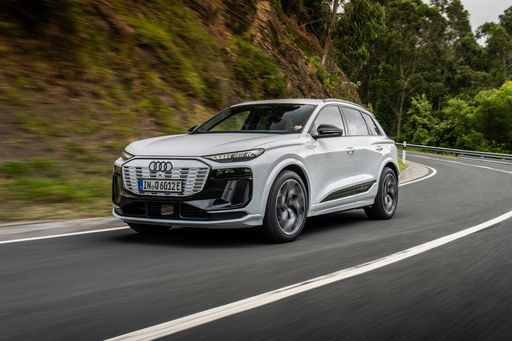 @ Audi AG
@ Audi AG
Audi Q6 e-tron
Costs and Consumption
View detailed analysis
Engine and Performance
View detailed analysis
Dimensions and Body
View detailed analysis
Audi Q6 e-tron
The Audi Q6 e-tron balances sleek, coupe-like styling with a roomy, upscale interior that feels modern without being showy. It delivers refined electric performance and smart tech that make daily driving effortless — the sort of EV that might make petrolheads grudgingly admit they fancy the future.
details @ Audi AG
@ Audi AG
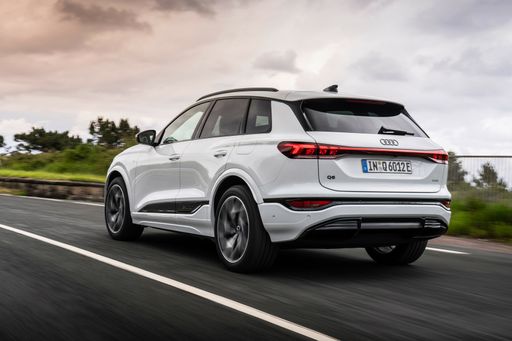 @ Audi AG
@ Audi AG
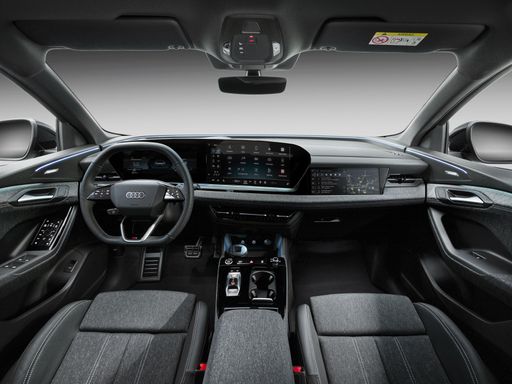 @ Audi AG
@ Audi AG
BMW iX3
The BMW iX3 brings BMW's familiar SUV poise into the electric era, blending restrained styling and a comfortable, composed ride that will please traditionalists dipping their toes into electrification. It's quiet, practical and rather grown-up about going electric — a sensible choice for buyers who want BMW driving manners without the drama.
details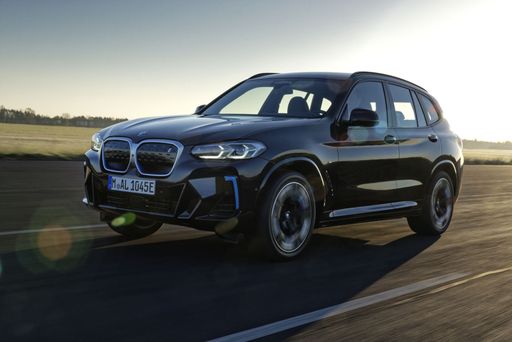 @ BMW Group Press
@ BMW Group Press
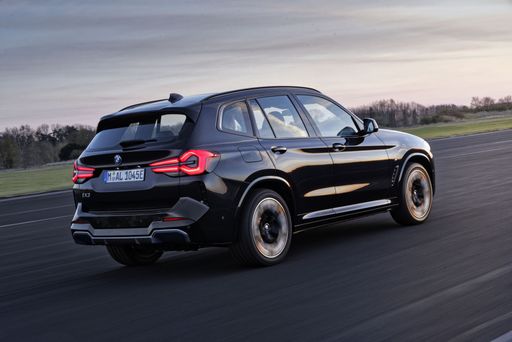 @ BMW Group Press
@ BMW Group Press
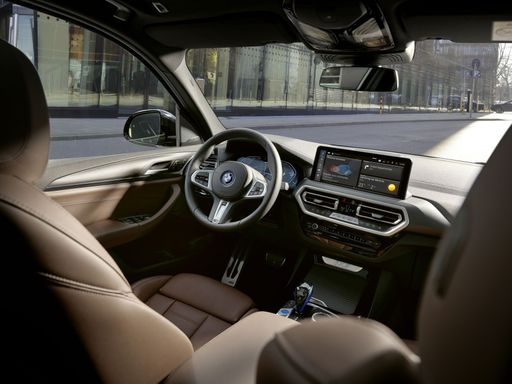 @ BMW Group Press
@ BMW Group Press
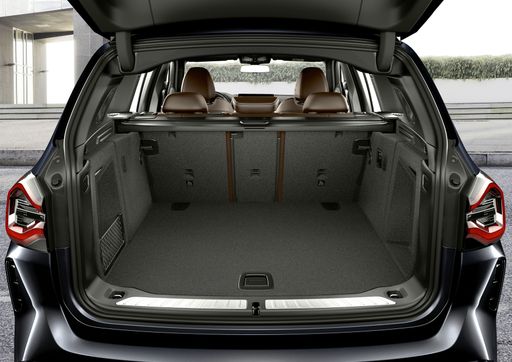 @ BMW Group Press
@ BMW Group Press
 @ Audi AG
@ Audi AG
|
 @ BMW Group Press
@ BMW Group Press
|
|
|
|
Costs and Consumption |
|
|---|---|
|
Price
54400 - 91900 £
|
Price
59100 - 64600 £
|
|
Consumption L/100km
-
|
Consumption L/100km
-
|
|
Consumption kWh/100km
15.6 - 18.9 kWh
|
Consumption kWh/100km
15.10 kWh
|
|
Electric Range
482 - 656 km
|
Electric Range
805 km
|
|
Battery Capacity
75.8 - 94.9 kWh
|
Battery Capacity
108.70 kWh
|
|
co2
0 g/km
|
co2
0 g/km
|
|
Fuel tank capacity
-
|
Fuel tank capacity
-
|
Dimensions and Body |
|
|---|---|
|
Body Type
SUV
|
Body Type
SUV
|
|
Seats
5
|
Seats
5
|
|
Doors
5
|
Doors
5
|
|
Curb weight
2200 - 2425 kg
|
Curb weight
2360 kg
|
|
Trunk capacity
499 - 526 L
|
Trunk capacity
520 L
|
|
Length
4771 mm
|
Length
4782 mm
|
|
Width
1939 - 1965 mm
|
Width
1895 mm
|
|
Height
1665 - 1685 mm
|
Height
1635 mm
|
|
Max trunk capacity
1361 - 1529 L
|
Max trunk capacity
1750 L
|
|
Payload
540 kg
|
Payload
465 kg
|
Engine and Performance |
|
|---|---|
|
Engine Type
Electric
|
Engine Type
Electric
|
|
Transmission
Automatic
|
Transmission
Automatic
|
|
Transmission Detail
Reduction Gearbox
|
Transmission Detail
Reduction Gearbox
|
|
Drive Type
Rear-Wheel Drive, All-Wheel Drive
|
Drive Type
All-Wheel Drive
|
|
Power HP
252 - 490 HP
|
Power HP
469 HP
|
|
Acceleration 0-100km/h
4.4 - 7.6 s
|
Acceleration 0-100km/h
4.90 s
|
|
Max Speed
210 - 230 km/h
|
Max Speed
210 km/h
|
|
Torque
450 - 855 Nm
|
Torque
645 Nm
|
|
Number of Cylinders
-
|
Number of Cylinders
-
|
|
Power kW
185 - 360 kW
|
Power kW
345 kW
|
|
Engine capacity
-
|
Engine capacity
-
|
General |
|
|---|---|
|
Model Year
2024 - 2025
|
Model Year
2026
|
|
CO2 Efficiency Class
A
|
CO2 Efficiency Class
A
|
|
Brand
Audi
|
Brand
BMW
|
What drivetrain options does the Audi Q6 e-tron have?
Available configurations include Rear-Wheel Drive or All-Wheel Drive.
The prices and data displayed are estimates based on German list prices and may vary by country. This information is not legally binding.
